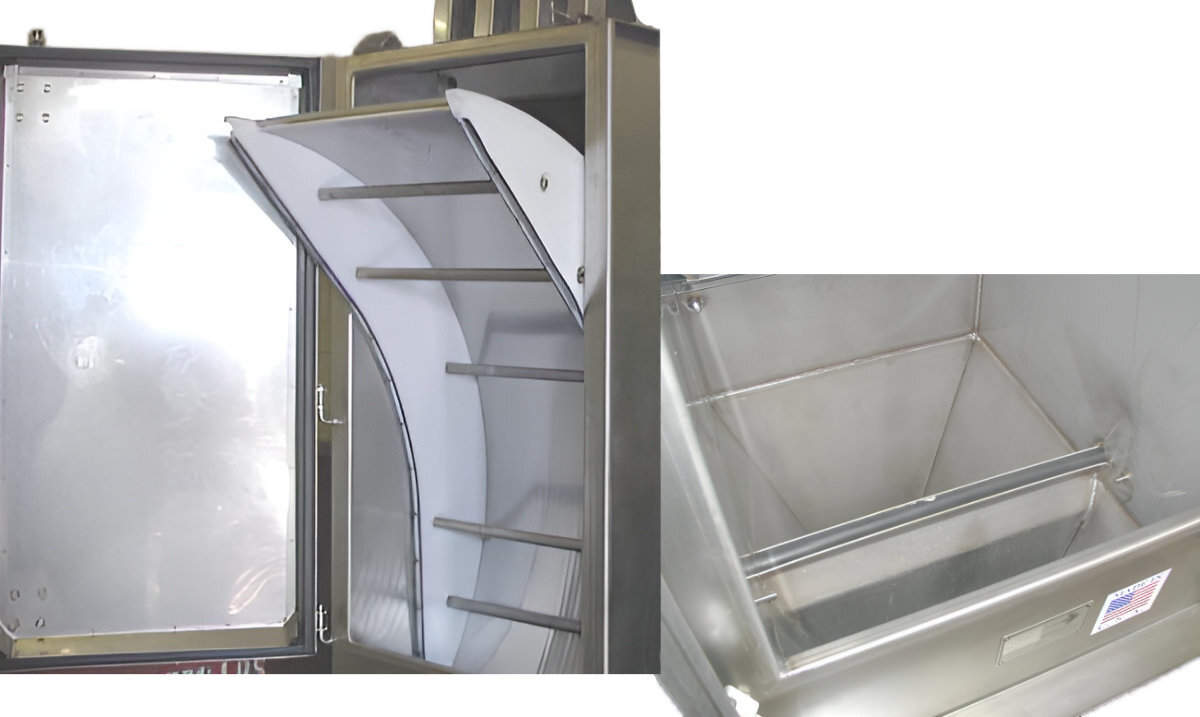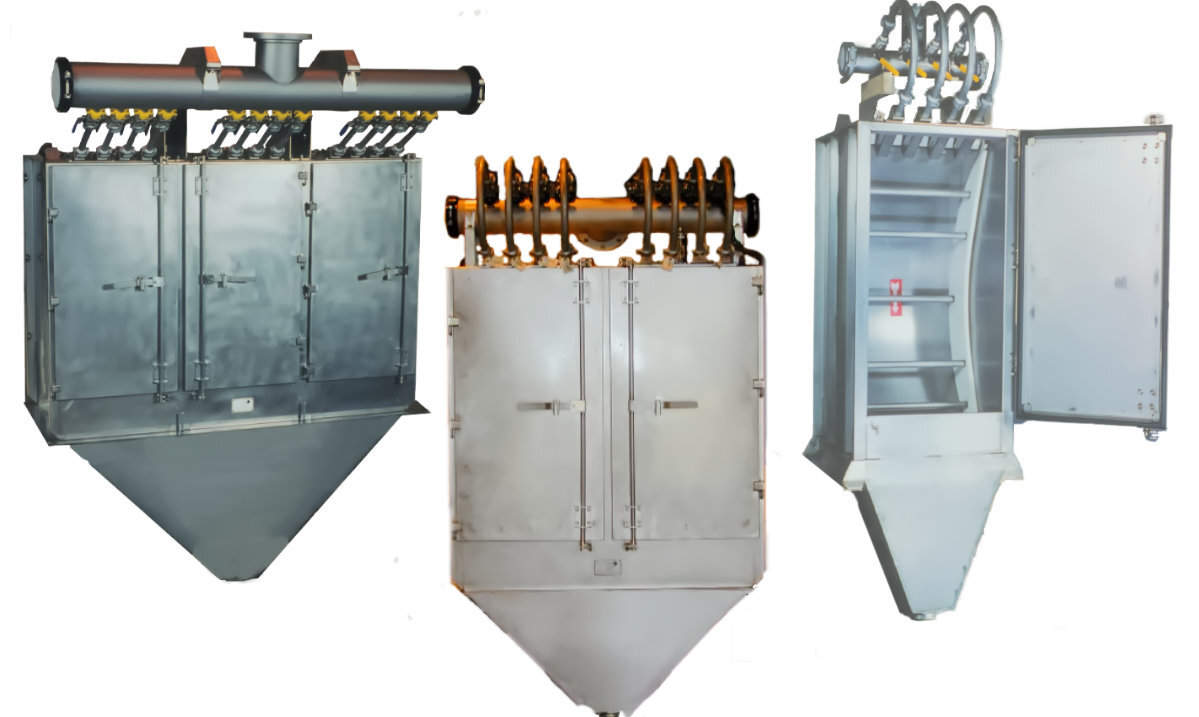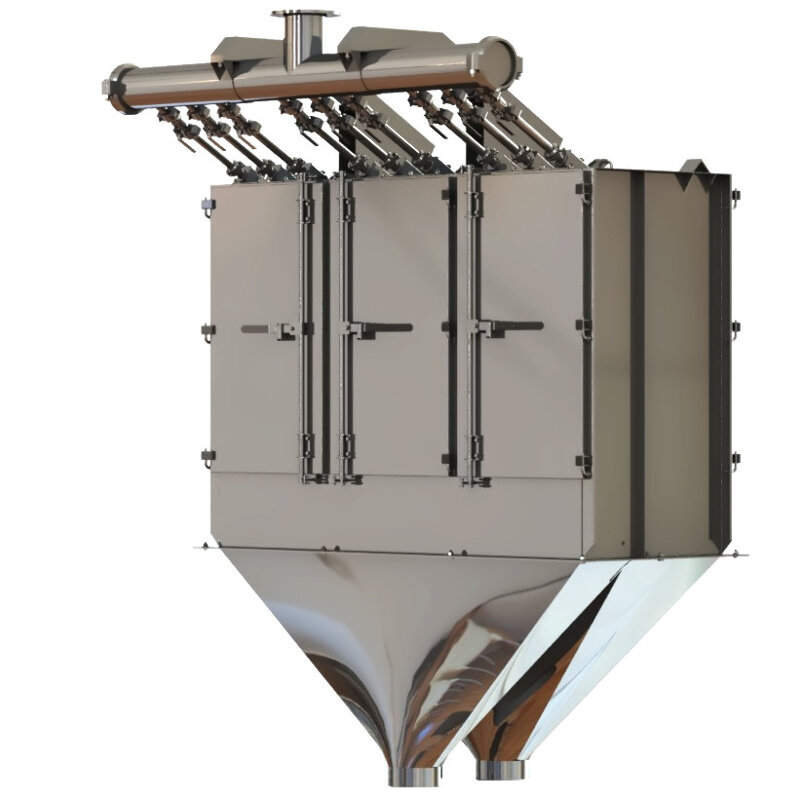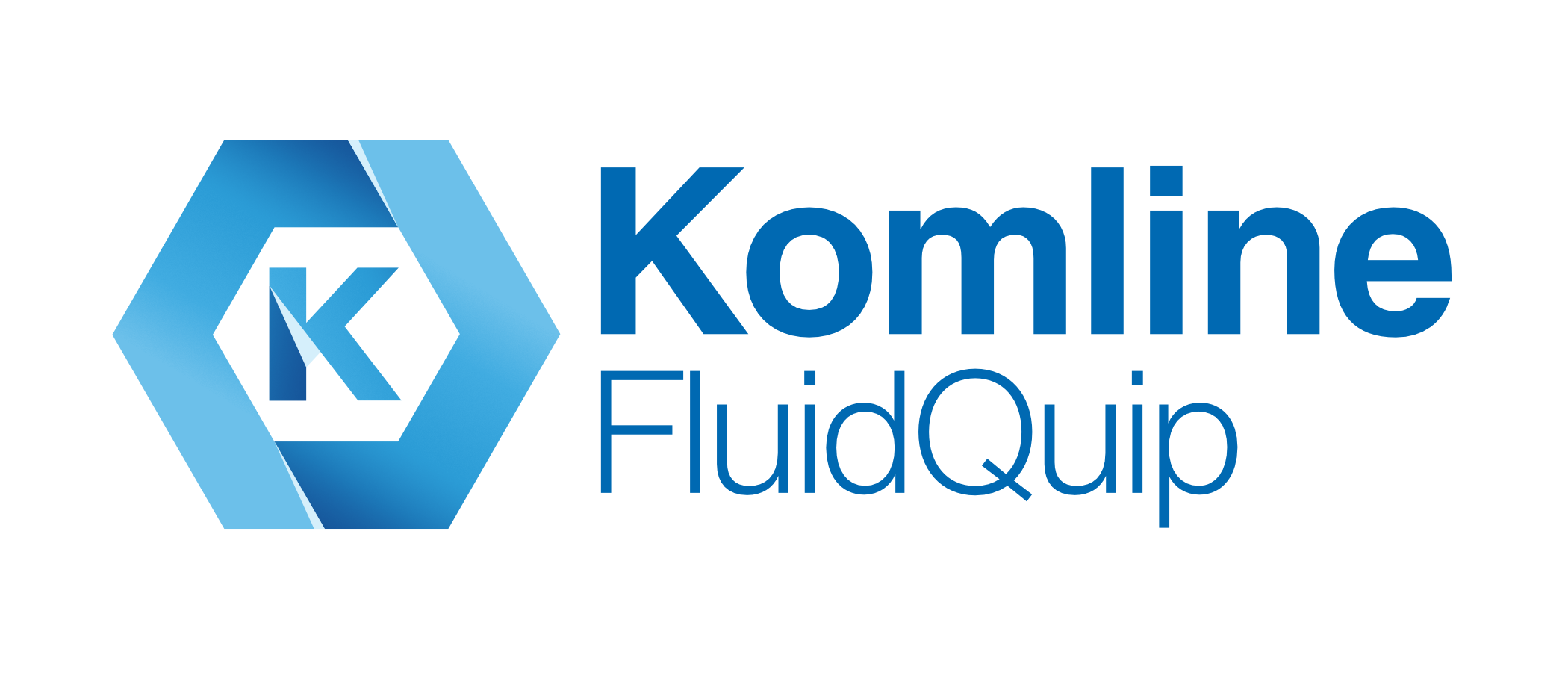Applications
Benefits

Features
- Hinged nozzle mounting plate and Roll-In screen cradles allow quick and easy screen changing
- Easy screen access through large doors on both front and backside of screen box
- Nozzles can be changed from outside the box during operation
- Vapor-proof EPDM rubber or optional silicone door seals
- Rugged one-handle door locks
- Available in 316L or 304L stainless steel construction
- Straight Pipe or Flanged connections available
- Various header and feed pipe designs available

- The FluidQuip 120° Pressure Screens consists of a cabinet with a specified number of compartments, each enclosing a single screen, supplied by three to five (3-5) nozzles connected to a feed header. Valves on the feed header control slurry flow. Slurry pumped into the header manifold @ 60 psi (413 kPa) is directed through the feed nozzles at a tangent onto the 120° screen. As the slurry flows downward, the screen’s bar edges slice off thin layers that pass through the slot opening to the filtrate port. Slurry material larger than the slot openings is retained on the screen surface and flows downward to the “oversize” port.
- By varying feed pressure, nozzle orifice size, and the open area of screens, operating conditions can be customized to meet specific product requirements. FluidQuip can assist customers in determining the conditions that best fit their needs.
FluidQuip pressure screens are used for third grind dewatering, with 50-micron screen openings and ¾” feed nozzles for grind rate capacities up to 12,000 bpd (300 MTPD) per screen surface
For the first stage fiber wash, one FluidQuip triple pressure screen should be used for every 15,000 bpd of grind rate. For stages, 2 through 6, one FluidQuip triple pressure screen should be used for every 45,000 bpd.
For the fiber dewatering screen, one FluidQuip triple pressure screen should be used for every 45,000 bpd of grind rate.
FluidQuip pressure screens are used, with 150-micron screen openings and ¾” feed nozzles for grind rate capacities up to 16,000 bpd (400 MTPD) per screen surface.



